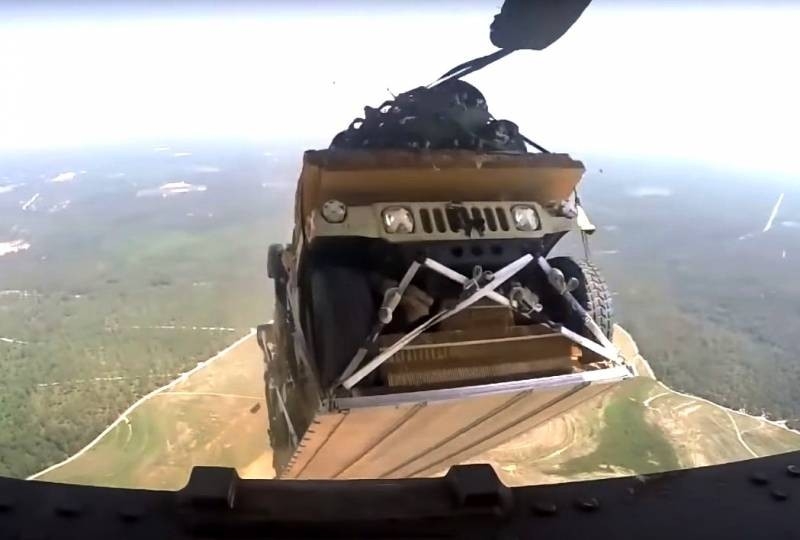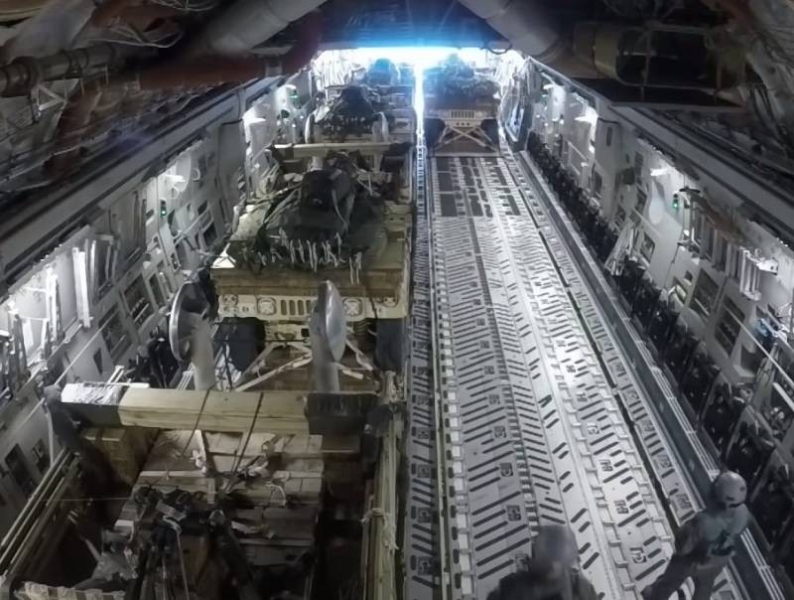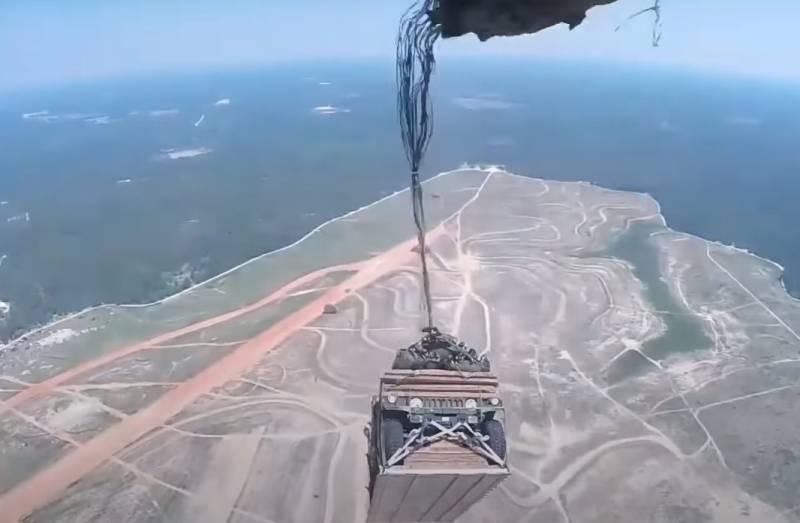
US Army plans to expand landing capabilities of its vehicles, including light combat vehicles. In the near future, the US Armed Forces will announce a competition for the creation of a new airborne landing system.
Increased attention to the issues of landing military equipment in the American army is not accidental. US conduct military operations in different parts of the world, regularly thrown around the world, including thousands of kilometers from its borders, a large number and personnel, and technology.
How and what equipment is the US Armed Forces landing?
The weak point of the US armed forces in terms of airborne landing of military equipment are parachute systems. Americans can still parachute only lightweight combat vehicles HMMWV (Humvee), LSV and L-ATV, as well as howitzers M119. The equipment is mounted on special platforms with parachute systems, that roll out of planes into the air.
US Army parachute heavier equipment, unlike Russian airborne, unable. The one exception at the time was the M551 Sheridan Light Tank, landing with landing platforms, but in 1997 he was withdrawn from service with the U.S. Army. maybe, what's the new light tank, developed by Mobile Protected Firepower (MPF), will be able to replace the Sheridan in the arsenal of the airborne units and it will also be able to land from low altitudes.
For landing of cargoes and equipment of a more significant weight, the US Armed Forces traditionally used the LAPES low-altitude landing system (Low Altitude Parachute Extraction System). It's about height in 1,5-3 meters from the aircraft S-130. As the aircraft approaches, the crew releases the landing gear and drops to three meters at speed 210 kmh. A stabilizing parachute is thrown from the cargo hatch, opening parachutes. Further, the loading platform exits with a small positive angle of attack and is braked by friction of the platform on the ground and exhaust parachutes.
by the way, fierce debate on the future of the US airborne troops still underway in the US military command. One position - to develop them to the level of Russian airborne, including creating opportunities for landing military equipment, and the other - leave it as it is, or even remove the parachute component, turning airborne units into airmobile, disembarkation of which occurs after the landing of aircraft.

Improving the capabilities of landing equipment with S-17
Currently, the main military transport aircraft of the US Armed Forces are Boeing C-17 and C-130. Technical capabilities of the S-17 aircraft allow delivering simultaneously 8 HMMWV - Wheeled SUV.
However, given the weight and dimensions of the cars, currently aircraft take on board no more 2 HMMWV. The command considers this amount of light military vehicles transported to be clearly insufficient. Therefore, the task was set to increase this amount at least to 4 machines and create opportunities for their effective landing.

Besides, The United States is testing the ability to drop light multi-purpose armored car JLTV. A year ago, tests were carried out on the basis of the 82nd Airborne Division. According to an analyst with the US Air Force and Special Operations Department, Wayne G.. Lovely, JLTV parachute, and then checked on the ground, whether they were damaged during the landing and whether they can be operated in battle.
Ilya Polonsky











